- Clone
- SMI 35 (See other available formats)
- Regulatory Status
- RUO
- Other Names
- Neurofilament heavy polypeptide, NF-H, 200 kD neurofilament protein, neurofilament triplet H protein
- Isotype
- Mouse IgG1, κ
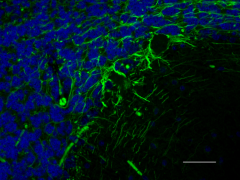
-

IHC staining of Alexa Fluor® 488 anti-Neurofilament H & M (NF-H/NF-M), Hypophosphorylated antibody (clone SMI 35) on formalin-fixed paraffin-embedded human cerebellum tissue. Following antigen retrieval using Sodium Citrate H.I.E.R. (Cat. No. 928602), the tissue was incubated with 5 µg/mL of the primary antibody overnight at 4°C. Nuclei were counterstained with DAPI, and the slides were mounted with ProLong™ Gold Antifade Mountant. The image was captured with a 40X objective. Scale Bar: 50 µm -

IHC staining of Alexa Fluor® 488 anti-Neurofilament H & M (NF-H/NF-M), Hypophosphorylated antibody (clone SMI 35) on formalin-fixed paraffin-embedded rat cerebellum tissue. Following antigen retrieval using Sodium Citrate H.I.E.R. (Cat. No. 928602), the tissue was incubated with 5 µg/mL of the primary antibody overnight at 4°C. Nuclei were counterstained with DAPI, and the slides were mounted with ProLong™ Gold Antifade Mountant. The image was captured with a 40X objective. Scale Bar: 50 µm -

IHC staining of Alexa Fluor® 488 anti-Neurofilament H & M (NF-H/NF-M), Hypophosphorylated antibody (clone SMI 35) on formalin-fixed paraffin-embedded mouse midbrain tissue. Following antigen retrieval using Sodium Citrate H.I.E.R. (Cat. No. 928602), the tissue was incubated with 10 µg/mL of the primary antibody overnight at 4°C. Nuclei were counterstained with DAPI, and the slides were mounted with ProLong™ Gold Antifade Mountant. The image was captured with a 40X objective. Scale Bar: 50 µm
| Cat # | Size | Price | Quantity Check Availability | ||
|---|---|---|---|---|---|
| 835613 | 25 µg | $129.00 | |||
| 835614 | 100 µg | $323.00 | |||
Neurofilaments (NFs) are approximately 10 nanometer intermediate filaments found in neurons. They are a major component of the neuronal cytoskeleton, and function primarily to provide structural support for the axon and to regulate the axon diameter. There are three major NF subunits, and the names given to these subunits are based upon the apparent molecular mass of the mammalian subunits on SDS-PAGE. The light or lowest neurofilament (NF-L) runs at 68-70 kD. The medium or middle (NF-M) runs at about 145-160 kD, and the heavy or highest (NF-H) runs at 200-220 kD. However, the actual molecular weight of these proteins is considerably lower due to the highly charged C-terminal regions of the molecules. The level of NF gene expression correlates with the axonal diameter, which controls how fast electrical signals travel down the axon. Mutant mice with NF abnormalities have phenotypes resembling amyotrophic lateral sclerosis. NF immunostaining is common in diagnostic neuropathology. It is useful for differentiating neurons (positive for NF) from the glia (negative for NF).
Product Details
- Verified Reactivity
- Human, Mouse, Rat
- Antibody Type
- Monoclonal
- Host Species
- Mouse
- Formulation
- Phosphate-buffered solution, pH 7.2, containing 0.09% sodium azide.
- Preparation
- The antibody was purified by affinity chromatography and conjugated with Alexa Fluor® 488 under optimal conditions.
- Concentration
- 0.5 mg/ml
- Storage & Handling
- The antibody solution should be stored undiluted between 2°C and 8°C, and protected from prolonged exposure to light. Do not freeze.
- Application
-
IHC-P - Quality tested
SB - Reported in the literature, not verified in house
- Recommended Usage
-
Each lot of this antibody is quality control tested by formalin-fixed paraffin-embedded immunohistochemical staining. For immunohistochemistry, a concentration range of 5.0 - 10 µg/ml is suggested. It is recommended that the reagent be titrated for optimal performance for each application.
* Alexa Fluor® 488 has a maximum emission of 519 nm when it is excited at 488 nm.
Alexa Fluor® and Pacific Blue™ are trademarks of Life Technologies Corporation.
View full statement regarding label licenses - Excitation Laser
-
Blue Laser (488 nm)
- Application Notes
-
Additional reported applications (for the relevant formats of this clone): include ELISA Capture1-3, immunohistochemical staining on frozen tissue sections, immunofluorescence staining, and spatial biology (IBEX)6,7.
Clone SMI 35 reacts with highly phosphorylated neurofilaments, as well as with low degrees of phosphorylation. It primarily reacts with neurofilament H and with neurofilament M to a lesser extent.
Notes: On two dimensional gels, this antibody detects a band extending from the phosphorylated neurofilament position at 200 kD (pI 5.1) toward the non-phosphorylated position at 170 kD (pI 6.2). - Additional Product Notes
-
Iterative Bleaching Extended multi-pleXity (IBEX) is a fluorescent imaging technique capable of highly-multiplexed spatial analysis. The method relies on cyclical bleaching of panels of fluorescent antibodies in order to image and analyze many markers over multiple cycles of staining, imaging, and, bleaching. It is a community-developed open-access method developed by the Center for Advanced Tissue Imaging (CAT-I) in the National Institute of Allergy and Infectious Diseases (NIAID, NIH).
-
Application References
(PubMed link indicates BioLegend citation) -
- Petzold A. 2013. J. Neuroimmunol. 262:(1-10). (ELISA)
- Lu CH, et al. 2012. PLoS One. 7:e40998. (ELISA)
- Steinacker P, et al. 2011. PLoS One. 8:e23600. (ELISA)
- Poltorak M, et al. 1993. J. Neurosci. 13:2217. (IHC-F)
- Petzold A, et al. 2011. Brain. 134:464. (WB) PubMed
- Radtke AJ, et al. 2020. Proc Natl Acad Sci U S A. 117:33455-65. (SB) PubMed
- Radtke AJ, et al. 2022. Nat Protoc. 17:378-401. (SB) PubMed
- RRID
-
AB_2750327 (BioLegend Cat. No. 835613)
AB_2750327 (BioLegend Cat. No. 835614)
Antigen Details
- Structure
- The medium or middle NF (NF-M) runs at about 145-160 kD, and the heavy or highest NF (NF-H) runs at 200-220 kD.
- Distribution
-
Tissue Distribution: CNS, peripheral nerves and glandular cells of the prostate
Cellular Distribution: Cytoskeleton, nucleus, cytosol, and mitochondrion - Function
- Neurofilaments are the major components of the neuronal cytoskeleton. They provide axonal support and regulate axon diameter.
- Interaction
- Cell bodies and dendrites are generally unstained. Other cells and tissues are unreactive except for peripheral axons.
- Cell Type
- Mature Neurons
- Biology Area
- Cell Biology, Neuroscience, Neuroscience Cell Markers
- Molecular Family
- Intermediate Filaments, Phospho-Proteins
- Antigen References
- Gene ID
- 4744 View all products for this Gene ID
- UniProt
- View information about Neurofilament HM NF-H NF-M Phospho on UniProt.org
Other Formats
View All Neurofilament H&M (NF-H/NF-M), Phospho Reagents Request Custom Conjugation| Description | Clone | Applications |
|---|---|---|
| Anti-Neurofilament H & M (NF-H/NF-M), Hypophosphorylated | SMI 35 | IHC-P,WB,IHC-F,ELISA |
| Purified anti-Neurofilament H & M (NF-H/NF-M), Hypophosphorylated | SMI 35 | IHC-P,WB,IHC-F |
| Biotin anti-Neurofilament H & M (NF-H/NF-M), Hypophosphorylated | SMI 35 | WB |
| Alexa Fluor® 594 anti-Neurofilament H & M (NF-H/NF-M), Hypophosphorylated | SMI 35 | IHC-P,ICC |
| Alexa Fluor® 647 anti NF-H/NF-M, Hypophosphorylated | SMI 35 | IHC-P |
| Alexa Fluor® 488 anti-Neurofilament H & M (NF-H/NF-M), Hypophosphorylated | SMI 35 | IHC-P,SB |
Compare Data Across All Formats
This data display is provided for general comparisons between formats.
Your actual data may vary due to variations in samples, target cells, instruments and their settings, staining conditions, and other factors.
If you need assistance with selecting the best format contact our expert technical support team.
-
Anti-Neurofilament H & M (NF-H/NF-M), Hypophosphorylated

IHC staining of Neurofilament H & M (NF-H/NF-M), Hypophospho... 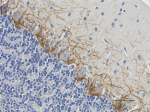
IHC staining of Neurofilament H & M (NF-H/NF-M), Hypophospho... 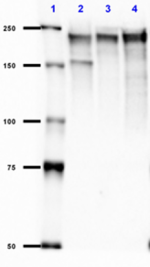
Western blot of Neurofilament H & M (NF-H/NF-M), Hypophospho... -
Purified anti-Neurofilament H & M (NF-H/NF-M), Hypophosphorylated
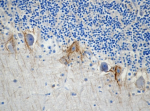
IHC staining of purified anti-Neurofilament H & M (NF-H/NF-M... 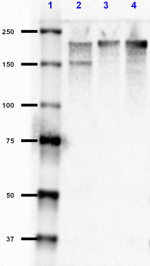
Western blot of purified anti-Neurofilament H & M (NF-H/NF-M... 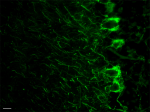
IHC staining of anti-Neurofilament H & M (NF-H/NF-M), Hypoph... -
Biotin anti-Neurofilament H & M (NF-H/NF-M), Hypophosphorylated

Western blot of Biotin anti-Neurofilament H & M (NF-H/NF-M),... -
Alexa Fluor® 594 anti-Neurofilament H & M (NF-H/NF-M), Hypophosphorylated
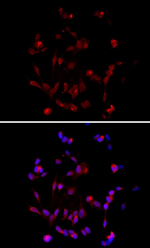
SH-SY5Y neuroblastoma cells were fixed with 4% paraformaldeh... 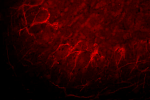
Immunofluorescence staining of anti-Neurofilament H & M (NF-... -
Alexa Fluor® 647 anti NF-H/NF-M, Hypophosphorylated
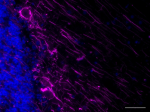
IHC staining of Alexa Fluor® 647 anti-Neurofilament H & M (N... 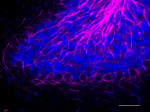
IHC staining of Alexa Fluor® 647 anti-Neurofilament H & M (N... 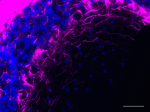
IHC staining of Alexa Fluor® 647 anti-Neurofilament H & M (N... 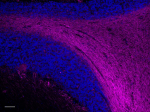
IHC staining of Alexa Fluor® 647 anti-Neurofilament H & M (N... 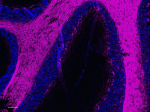
IHC staining of Alexa Fluor° 647 anti-Neurofilament H & M (N... 
IHC staining of Alexa Fluor® 647 anti-Neurofilament H & M (N... -
Alexa Fluor® 488 anti-Neurofilament H & M (NF-H/NF-M), Hypophosphorylated

IHC staining of Alexa Fluor® 488 anti-Neurofilament H & M (N... 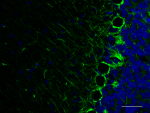
IHC staining of Alexa Fluor® 488 anti-Neurofilament H & M (N... 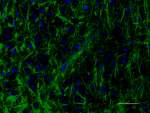
IHC staining of Alexa Fluor® 488 anti-Neurofilament H & M (N...
